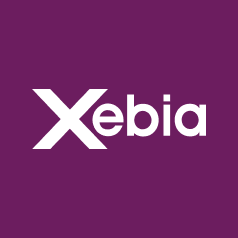The banking industry is transforming rapidly as customers demand more convenient, personalized services. To address these constantly evolving expectations, banks must enhance customer interactions across diverse channels, including branches, call centers, and digital platforms. However, many banks face several challenges due to outdated systems, manual workflows, and a lack of coordination among different service channels. This article examines these challenges and proposes a solution banks can explore to improve customer experience and optimize operations.
Key Challenges in Modern Banking
Today, banks encounter various common issues that can have a negative impact on customer satisfaction and efficiency:
1. Disjointed Customer Experiences
Customer data is often maintained across disparate systems, making it challenging for bank employees to gain a comprehensive understanding of the customers’ situation. For instance, if a customer contacts the bank about an issue, the branch staff may not have access to previous interactions. This can lead to repetitive questioning, which can frustrate the customer. This can be avoided by having a unified system that provides bank staff access to all customer interactions, enabling them to deliver more cohesive and consistent service.
2. Slow Service Request Processing
Banks often struggle with manual processes and poor tracking when handling service requests, such as updating account details or resolving disputes. This can lead to unnecessary delays, like waiting for approvals when changing an address. Automating these processes can speed up service and boost customer satisfaction.
3. Delayed Key Processes
Critical operations like customer onboarding and lead generation frequently suffer from delays due to manual handling. For example, signing up a new customer could take days, potentially causing them to lose interest. Automating these steps can reduce wait times and ensure banks respond promptly to customer needs.
4. Irrelevant Product Recommendations
Cross-selling additional products is a major revenue source for banks, but the recommendations often lack context. A customer interested in a home loan might receive an offer for a credit card instead, which may not be relevant. Using AI to analyze customer data can help banks make more accurate and timely product recommendations.
5. Fragmented Systems
Many banks use outdated, disconnected systems that require employees to switch between applications to complete tasks. This fragmentation leads to inefficiencies and errors. Integrating these systems into a single platform with a unified interface can improve service speed and accuracy.
Addressing Key Challenges with AI-Powered Solutions
Banks can adopt an AI-driven, unified solution that consolidates customer data and processes to enable:
- AI-Powered Personalization: AI can analyze customer data to predict needs and suggest relevant services, such as recognizing customer-specific needs or recommending budgeting tools based on spending patterns. Automating routine tasks can also reduce wait times and allow staff to focus on more complex issues.
- Unified Customer History: Consolidating all customer data into one system ensures bank staff can access complete information, regardless of how the customer interacts with the bank. This helps maintain consistent and informed service across all channels.
- Scalable Solutions: The scalable solution can quickly adapt to new technologies and accommodate increased demand without major disruptions.
- Boosting Productivity: Automating manual tasks frees employees to focus on more valuable work, such as improving customer relationships or developing new services, benefiting both the bank and its customers.
Read also: Hyper-Personalized Digital Banking Platform - Transforming the Banking Landscape »
Use Cases
The customizable AI-powered solution can enhance customer service and internal operations for both retail and corporate banking:
- Retail Banking: Supports key services like managing accounts, loans, and personal finances on desktop and mobile platforms.
- Corporate Banking: Offers advanced features for business customers, such as managing company accounts, payroll, and business loans.
- Customer Relationship Management (CRM): Integrates CRM with a 360-degree customer data view to enable personalized service and targeted product recommendations.
Read also: Transforming Back Office Operations in Banking with Xebia’s Digital Banking Solution
Features
Personalized Dashboards
The unified AI-driven solution also includes dashboards tailored to different users:
- For Customers: A simple, easy-to-use dashboard that shows all their financial activities, like account balances, transaction history, and personalized product suggestions.
- For Bank Staff: Tools that help employees manage customer requests, monitor performance, and streamline their work.
- For Business Clients: A dashboard that provides a clear overview of the company’s financial operations, including cash flow, payroll, and reports.
Conclusion
In today's fiercely competitive environment, delivering exceptional customer experience is crucial for business growth. Banks need to act swiftly and embrace a unified, AI-driven solution to overcome current challenges, improve service delivery, and be future-ready. By integrating AI-driven solutions, banks can unify customer data, automate routine tasks, and provide hyper-personalized, seamless customer experiences across all channels. The future of banking is AI-powered, and early adopters of AI will not only gain a definite competitive advantage but also set new standards of excellence.





